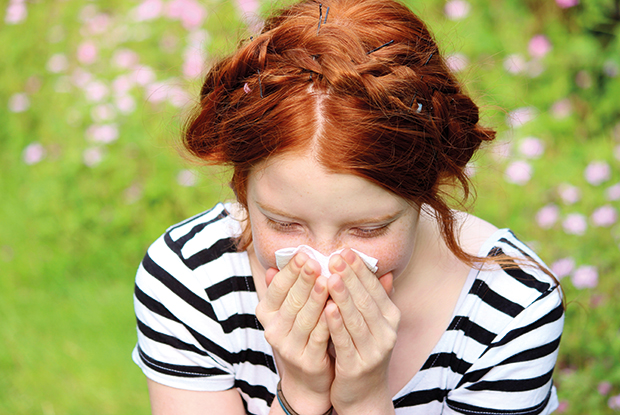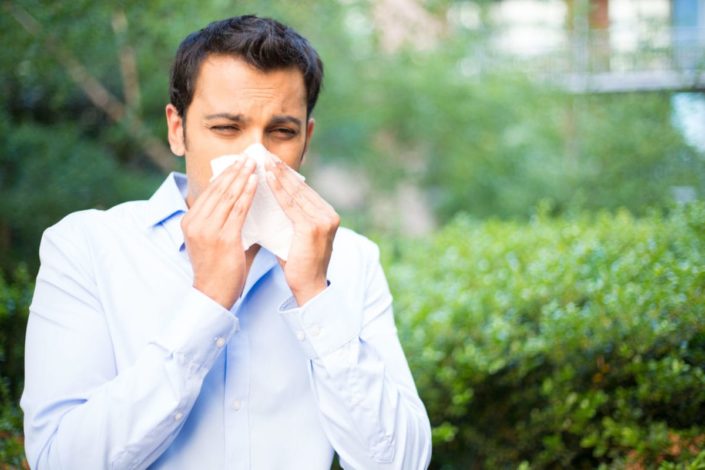Health
Healthy Lifestyle Habits You Can Follow Even on a Busy Schedule
When we’re busy with work, it’s very easy to forgo healthy lifestyle choices. Fortunately though, there are still a lot of things we can do to stay healthy even if we’re drowning in work. You just really have to pay attention to your own habits.
Drinks lots of water

One of the easiest healthy habits you can do is to keep yourself well-hydrated every day. Even if you’re busy, it’s still very easy to have a glass of water while working. You can also have a water bottle on your desk so that you can remind yourself to drink up from time to time. Some even do use alarms on their phones just to remind themselves to drink water.
Eat breakfast

In Singapore, more and more people are actually skipping breakfast. But, no matter how busy you are, you should always find time for breakfast. Having breakfast should be on your list of priorities! Skipping breakfast will cause you to take less healthy food options throughout the day. If you’re busy with work, you’re usually stressed out. And eating unhealthy food will only make things worse.
Drink coffee

When you’re busy, the go-to drink you’ll usually have is coffee. Coffee helps you stay alert and get more things done. But, of course, there is still a debate about how good or bad it can be for our health. For one, it does have a lot of benefits. But there are also risks when having too much. So the simple solution, if you think about it, is just to not have too much! The pros will far outweigh the cons as long as you drink in moderation.
Be mindful of what you eat

When we’re focused on work, we usually don’t pay attention to what we’re putting in our stomachs. If the food is quick and convenient, I’m going to have it since I still have a lot of work to do. Don’t think like this. Eating mindfully is also one of the best healthy habits you can have. Eating slowly also comes with that. We usually gobble down our food without even taking a break just to save time. That’s a big no-no.
Sneak in a little exercise each day

You can do some push-ups and sit-ups as you wake up, for example. Or maybe you can take the stairs up to your office if you still have time. You can also take breaks and just walk around your office. You’re giving your mind some time to rest and you’re also moving your body a bit. If you can’t find time to do actual exercise, this might be the best thing you can do.
5 Must-Know Tips for Beginning Triathletes
If you ask me, triathlons show the peak of human endurance and physical performance. Triathletes go for miles and miles with each discipline: running, cycling, and swimming. There are also many official triathlon events that happen in Singapore too! And if you yourself are gearing up for a triathlon event for the first time, here are some tips you need to know.

Slowly build your experience
Firstly, if you’re a complete beginner, you should start with smaller triathlon events first. It helps you get a feel for how triathlons actually work and you can also check your fitness level at that particular time. You do not want to go to a global event like the Ironman World Championship for your first try at a triathlon. The overall distance of the whole event is simply too much for a beginner.

Fit your training to your lifestyle
For one, you should never go to a triathlon event without training. But you should also create a program that fits your everyday schedule. Don’t create a training schedule that will interfere with more important daily activities. For instance, if you train too hard on a workday, both you’re mind and body will be exhausted. This can be detrimental to your long-term fitness and health. Just remember to make your training moderate but consistent.

Go with groups
The triathlon community in Singapore is actually bustling and there are a lot of individuals who enjoy doing meet-ups for training. Going with a group can add a different dynamic to your trainings. For one, it’ll be less boring. It’ll also be easier to stay motivated because you have to push yourself and keep up with the others’ pace. You might also get a lot of valuable advice from these fellow athletes.

Do brick sessions
Brick sessions or back-to-back workouts are considered integral parts of training for a triathlon event. A brick workout basically means you complete a bike and run workout or a bike and swim workout back-to-back. This is to help your body get used to transitioning from one exercise to the other. This is very important because the sudden transitions from swimming then cycling and lastly running are not as easy as it sounds.

Get used to open water swimming
Another very important part of training is to include open water swims. Although it won’t always be readily available, it’s still a valuable time for you to get used to the swim leg of the event. Swimming in open water can feel very different from practicing in the pool, especially with the pressure of the whole competition. So, try to expose yourself to that experience as much as possible.
What are the Essential Vitamins and Minerals?
Understanding how the 27 vitamins and minerals are used in the body is essential when you want to change your diet. Knowing what you need instead of just a list of food or a diet plan is better because you will know how the micronutrients affect your body.

Vitamin A – Deficiency can lead to blindness or night blindness. Vitamin A is important for growing children and expectant mothers.
Vitamin B6 – It is essential in the formation of hemoglobin by storing protein and carbohydrates and using iodine.
Vitamin B12 – It helps get the energy from food, make healthy red blood cells, and maintains a healthy nervous system.

Vitamin C – It helps make collagen and is considered an antioxidant. Deficiency can lead to scurvy.
Vitamin D – It helps regulate the calcium and phosphate levels in the body. Deficiency can lead to osteomalacia, rickets, and body pain.
Vitamin E – It serves an as antioxidant that maintains healthy skin, eyes, and immune system.
Vitamin K – Deficiency can make wound healing slow and difficult, because not only does it keeps bones healthy but it’s important for blood-clotting.

Biotin – It is used for fat metabolism.
Calcium – It’s the important component for bones and teeth. Deficiency can cause poor mobility, brittle bones, and degeneration.
Choline – This is needed in muscle control and memory because it is used for the production of acetylcholine, a neurotransmitter.

Chromium – It affects both the energy we get from food and the insulin levels in the body.
Copper – It is essential in the release of iron during hemoglobin-formation. It’s also important in white blood cell production.
Folate – It helps in the formation of red blood cells. In pregnant women, folate is necessary for the infant’s nervous system development.
Iodine – Its most important function is during the synthesis of thyroid hormones.

Iron – Its most important function is the creation of red blood cells to carry oxygen.
Magnesium – It is essential in converting food into energy, hormone production, and bone health.
Manganese – It’s important in activating body enzymes.
Molybdenum – It helps in activating enzymes for creating genetic material.
Niacin – It helps in getting the energy from the food as well as maintain healthy skin and nervous system.

Pantothenic Acid – Without pantothenic acid, you will always feel tired and stressed. It helps in several bodily functions especially in releasing the energy from food.
Phosphorus – Not only does it help release energy from food, it also helps maintain strong bones and teeth.
Potassium – It helps in maintaining healthy nerves and muscles, as well as keep the heart muscles healthy and balancing the body fluids.
Selenium – It’s an antioxidant that helps the immune system prevent damage to cells and tissues.

Sodium and Chloride – These are electrolytes that maintain the balance of body fluids. They even help the body digest the food we eat.
Thiamin – This is needed to convert carbohydrates to energy, as well as maintain proper nerve signal conduction and muscle contraction.
Riboflavin – It helps in releasing the energy from food and keeps the nervous system, skin, and eyes healthy.
Zinc – It helps in the processing of protein, fat, and carbohydrates, as well as in keeping healthy cells, making enzymes, and healing wounds.
Safe Workout Routines for Pregnant Women
Pregnant women are advised to eat food that make them feel happy. As long as the mother doesn’t get overweight, she can eat more than the usual number of meals and almost any food. That doesn’t mean, however, that regular exercise should be ignored. Studies show that women who stay fit throughout their pregnancy have fewer complications and have easier labor and childbirth.

Walking Guide for Pregnancy
Walking is the safest exercise to try if you don’t have any experience at the gym prior to your pregnancy. However, if you loved hiking before you got pregnant, you can still stick to your minimum 15-minute walks thrice a week. Once your body is used to the schedule, you can increase the walking sessions gradually up to 30 minutes. Some women can go for a total of 150 minutes weekly (which is about 30 minutes 5 times a week). Don’t forget to talk to your doctor if you experience back or pelvic pain during your third trimester.
Simple Exercises at Home
You don’t need to go to the gym to rid your body of aches and pains associated with pregnancy. Try the following simple exercises:

- To improve balance, place one hand on a sturdy chair and stand with your knees and toes pointed at 45-degree angles. Keeping your back straight, bend your knees to lower your torso, then straighten to return to your original position. Repeat.
- To strengthen your arms and shoulders, sit with your back straight and hold an object that weighs at least 5 pounds in each hand. Keep your elbows bent at 90-degree angles, then lift the weights up to your shoulder. Lower your arms back to the starting position then repeat.
- To strengthen your legs, lie on your side with your head supported on your forearm and one leg bent at a 45-degree angle. Support your body with the other free arm placed on the floor, then lift the other leg while keeping it straight to about hip’s height. Do the same with the other leg.

Gym Guide for Pregnant Women
If you have never been a regular in the gym prior to your pregnancy, you should consult your doctor about your plans to sign up for a membership. Some women can still keep up with their workout routines at the gym depending on their fitness level and experience. You will also need to consider which trimester you’re in and your overall feeling. You can sign up for prenatal classes if there are any because the workouts are designed primarily for expectant mothers.
The trainer usually recommends the following exercises for pregnant women: yoga, Pilates, water aerobics, stationary bike, treadmill, and elliptical training. Yoga focuses on breathing and movements, while Pilates can help you improve abdominal muscles. Water aerobics is usually recommended during the third trimester because it is safe and relaxing, just like moderate walking exercise on the treadmill. A stationary bike is also an option during the third trimester, but you can also try elliptical training if you’re experiencing joint and muscle pain.
How to Manage your Allergic Rhinitis when Staying Indoors and Outdoors
Managing your allergic rhinitis takes more than just the avoidance of allergens. A lot of antihistamines sold in Singapore can come to your rescue whenever you need it – but it’s still important to know how you can avoid being at a higher risk of an allergic reaction.
While we are all prone to outdoor exposure from time to time, there are steps you can follow in easing the risk of getting an allergic rhinitis. Whether it’s seasonal or perennial allergic rhinitis, here are some tips you can keep in mind:

On Indoor exposure
• Keep your windows closed. While it’s ideal to let fresh air inside your room often, there’s an increased number of pollens and other allergens that may enter the room the longer you keep the windows open.
• If possible, use air conditioning in your home and car. The AC units filter the air that circulates inside your room/car, and this is highly essential during times of peak pollen season.
• Wash your sheets and beddings frequently. This reduces your potential exposure to dust mites in the bedroom. While these mites are microscopic to be seen by the naked eye, there are some which may be lurking in your duvet, comforters, and pillows without your knowledge. In order to ensure you are safe from the ill-effects they may bring, use hot water in washing your sheets and wash them often.

• Use a dehumidifier. If you have a basement or a damp, humid area in your residential complex – always clean the place and keep the humidity low. If molds are starting to be visible, clean it using detergent and bleach solutions. Consult an allergist about more information regarding the matter.
• Instead of sweeping or dry-dusting the floors, opt to clean it using a mop or a damp rag. This is more efficient in ensuring the floors are free from bacteria and other potential allergens.
On Outdoor exposure
• Stay indoors during seasons of strong winds. Powerful winds can easily blow pollens around, making you prone to an allergic rhinitis. Peak pollen counts happen in the middle of the morning and around early evening.
• Wear protective gear such as sunglasses or glasses when you head outdoors. This effectively minimizes the risk of getting pollen into your eyes – and it also gives your eyes the protection it needs from the sun’s harsh UV rays.

• Minimize the use of window fans that can draw pollens and molds inside your residential area. If possible, totally avoid its usage.
• Do not rub your itchy eyes. Doing so will only irritate them further, and it can also contribute to the further worsening of your symptoms.
• Avoid hanging your clothes to dry outdoors. This makes your clothing prone to any pollen that may cling – especially with your bedsheets and towels.
